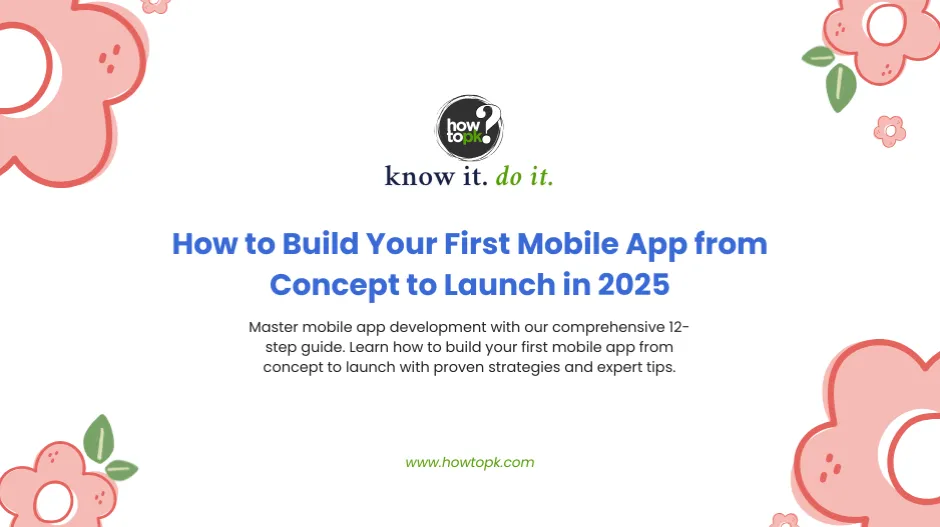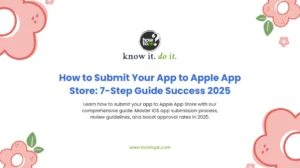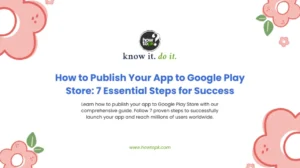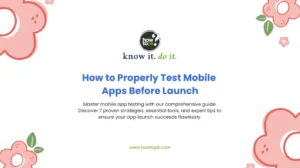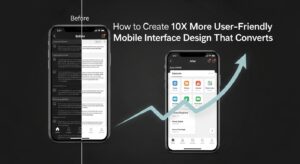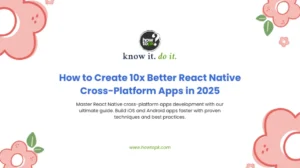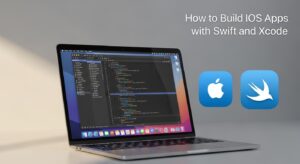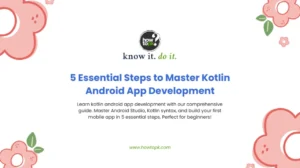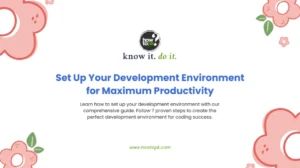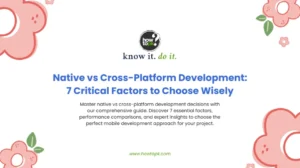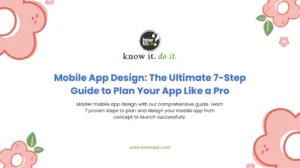Mobile app development has revolutionized how we interact with technology, creating countless opportunities for entrepreneurs, businesses, and developers worldwide. With over 6.8 billion smartphone users globally, the mobile app market continues to grow exponentially, making it an incredibly lucrative field for those ready to dive in.
Building your first mobile app might seem daunting, but with the right roadmap and strategic approach, you can transform your innovative idea into a successful application that users love. This comprehensive guide will walk you through every essential step of the mobile app development process, from initial concept validation to final launch and beyond.
Understanding the Mobile App Development Landscape
The mobile app development ecosystem has evolved dramatically over the past decade. Today’s developers have access to powerful frameworks, extensive libraries, and sophisticated tools that make app creation more accessible than ever before.
Key Statistics:
- Global mobile app revenues are projected to reach $935 billion by 2025
- Average smartphone user downloads 3-5 new apps monthly
- 88% of mobile time is spent in applications rather than browsers
- iOS users typically spend 2.5x more on apps than Android users
Understanding these market dynamics helps inform crucial decisions throughout your development journey.
Step 1: Validate Your App Idea
Before investing time and resources into mobile app development, you must validate your concept thoroughly. Successful validation prevents costly mistakes and ensures market demand exists for your solution.
Effective Validation Methods
- Survey Potential Users: Create targeted surveys to gauge interest levels. Ask specific questions about pain points your app addresses and willingness to pay for solutions.
- Build a Minimum Viable Product (MVP): Develop a basic version with core functionality to test user engagement and gather feedback.
- Analyze Competitor Success: Study similar applications to understand market gaps and opportunities for improvement.
- Social Media Testing: Share your concept across relevant social platforms to measure organic interest and engagement.
Red Flags to Avoid
- Assuming everyone needs your app
- Skipping user interviews entirely
- Ignoring negative feedback
- Overcomplicating initial features
Remember: validation isn’t about proving you’re right—it’s about discovering the truth about market demand.
Step 2: Define Your Target Audience
Successful mobile app development requires laser-focused audience understanding. Generic applications rarely achieve meaningful traction in today’s competitive marketplace.
Creating Detailed User Personas
- Demographics: Age, gender, income, education, location
- Psychographics: Interests, values, lifestyle preferences, pain points
- Technology Usage: Device preferences, app usage patterns, technical proficiency
- Behavioral Patterns: When and how they use mobile applications
Target Audience Research Tools
Tool | Purpose | Cost |
Google Analytics | User behavior analysis | Free |
SurveyMonkey | Audience surveys | Freemium |
Facebook Insights | Social media demographics | Free |
App Annie | App market intelligence | Paid |
Understanding your audience informs every subsequent development decision, from feature prioritization to user interface design choices.
Step 3: Conduct Thorough Market Research
Comprehensive market research provides crucial insights that shape your mobile app development strategy. This phase determines whether your concept can compete effectively and identifies opportunities for differentiation.
Competitive Analysis Framework
- Direct Competitors: Apps solving identical problems with similar approaches
- Indirect Competitors: Applications addressing same user needs differently
- Substitute Products: Non-app solutions your target audience currently uses
Key Research Areas
- Market Size: Total addressable market and growth projections
- Pricing Models: How competitors monetize and user willingness to pay
- Feature Gaps: Unmet needs in existing solutions
- User Reviews: Common complaints and praise patterns
- Marketing Strategies: How successful apps acquire and retain users
Use tools like Sensor Tower, App Figures, and Similar Web to gather comprehensive competitive intelligence.
Step 4: Plan Your App Architecture
Proper architectural planning prevents technical debt and scalability issues that plague many mobile applications. This foundational work determines your app’s long-term success potential.
Core Architecture Components
- Frontend (Client-Side): User interface, user experience, local data storage
- Backend (Server-Side): Database management, business logic, API endpoints
- Integration Layer: Third-party services, external APIs, payment processing
- Security Framework: Authentication, data encryption, privacy protection
Scalability Considerations
Plan for growth from day one. Consider how your architecture handles:
- Increased user traffic
- Growing data volumes
- Feature expansion
- Platform diversification
Step 5: Design Your App’s User Experience
Exceptional user experience separates successful apps from failures. Mobile app development must prioritize intuitive navigation, engaging interactions, and seamless functionality across all user touchpoints.
UX Design Principles
- Simplicity: Eliminate unnecessary complexity and cognitive load
- Consistency: Maintain uniform design patterns throughout the application
- Feedback: Provide clear responses to user actions and system states
- Accessibility: Ensure usability for users with varying abilities and devices
Design Process Stages
- User Journey Mapping: Visualize complete user workflows
- Wireframing: Create low-fidelity structural layouts
- Prototyping: Build interactive models for testing
- Visual Design: Apply branding, colors, typography, imagery
- Usability Testing: Validate design decisions with real users
Essential Design Tools
- Figma: Collaborative interface design platform
- Sketch: Vector-based design application for Mac
- Adobe XD: Comprehensive UX/UI design solution
- InVision: Interactive prototyping and collaboration
Remember: great design isn’t just beautiful—it solves user problems efficiently and delightfully.
Step 6: Choose Your Development Approach
Selecting the right mobile app development approach significantly impacts timeline, budget, performance, and long-term maintenance requirements. Each option offers distinct advantages and trade-offs.
Native Development
Advantages:
- Optimal performance and responsiveness
- Full access to device features and APIs
- Superior user experience consistency
- Better security and reliability
Disadvantages:
- Higher development costs
- Longer time to market
- Separate codebases for iOS and Android
- Requires platform-specific expertise
Cross-Platform Development
Advantages:
- Shared codebase reduces development time
- Lower initial development costs
- Consistent functionality across platforms
- Easier maintenance and updates
Disadvantages:
- Potential performance compromises
- Limited access to platform-specific features
- Dependency on framework updates
- May not fully match native user experience
Hybrid Development
Advantages:
- Rapid development and deployment
- Web development skills transfer
- Single codebase for multiple platforms
- Lower development costs
Disadvantages:
- Performance limitations
- Inconsistent user experience
- Dependency on web view performance
- Limited offline functionality
Step 7: Set Up Your Development Environment
A properly configured development environment streamlines the mobile app development process and prevents common technical roadblocks. Investing time in setup pays dividends throughout your project.
Essential Development Tools
Code Editors:
- Visual Studio Code (free, extensive plugin ecosystem)
- Android Studio (official Android development IDE)
- Xcode (required for iOS development on Mac)
Version Control:
- Git (distributed version control system)
- GitHub/GitLab (remote repository hosting)
- Source control best practices
Testing Frameworks:
- Jest (JavaScript testing framework)
- XCTest (iOS unit testing)
- Espresso (Android UI testing)
Platform-Specific Setup Requirements
Android Development:
- Java Development Kit (JDK)
- Android SDK and build tools
- Device emulators for testing
- Gradle build system
iOS Development:
- macOS computer (required)
- Xcode and iOS SDK
- Apple Developer account
- iOS Simulator for testing
Cross-Platform Tools:
- React Native CLI or Expo
- Flutter SDK and Dart
- Platform-specific dependencies
Step 8: Start Coding Your Application
The coding phase transforms your mobile app development plans into functional software. Success requires systematic approach, clean code practices, and consistent progress tracking.
Development Methodology
- Agile Development: Iterative approach with regular sprint cycles
- Test-Driven Development: Write tests before implementing features
- Continuous Integration: Automated testing and deployment processes
- Code Reviews: Peer review processes to maintain quality standards
Programming Languages by Platform
Android Development:
- Kotlin: Modern, concise, fully interoperable with Java
- Java: Traditional Android development language
- Flutter/Dart: Google’s cross-platform framework
iOS Development:
- Swift: Apple’s modern programming language for iOS
- Objective-C: Legacy language still used in some projects
Cross-Platform:
- JavaScript/TypeScript: React Native development
- Dart: Flutter framework language
- C#: Xamarin framework (Microsoft)
Coding Best Practices
- Write clean, readable, self-documenting code
- Follow platform-specific style guidelines
- Implement proper error handling throughout
- Use consistent naming conventions
- Comment complex business logic thoroughly
- Optimize for performance from the beginning
Step 9: Implement Essential Features
Feature implementation requires strategic prioritization to deliver maximum user value while maintaining development efficiency. Focus on core functionality before adding advanced capabilities.
Core Feature Categories
Authentication and User Management:
- User registration and login
- Password recovery systems
- Profile management
- Social media integration options
Data Management:
- Local data storage (SQLite, Core Data)
- Cloud synchronization
- Offline functionality
- Data backup and recovery
User Interface Components:
- Navigation systems
- Form handling and validation
- Image and media handling
- Push notification systems
Feature Development Priority Matrix
Priority Level | Feature Type | Examples |
Critical | Core functionality | User login, primary app purpose |
Important | Enhanced usability | Push notifications, offline mode |
Nice-to-Have | Advanced features | Social sharing, advanced analytics |
Future | Experimental | AI integration, AR/VR features |
Performance Optimization
- Implement lazy loading for heavy content
- Optimize images and media files
- Use efficient data structures and algorithms
- Minimize network requests and payload sizes
- Implement proper caching strategies
Remember: users prefer apps that excel at core functionality over those with numerous mediocre features.
Step 10: Test Your Application Thoroughly
Comprehensive testing ensures your mobile app development efforts result in a polished, reliable product. Systematic testing prevents costly post-launch fixes and protects your reputation.
Testing Methodologies
- Unit Testing: Test individual components and functions in isolation
- Integration Testing: Verify different modules work together correctly
- User Interface Testing: Ensure UI elements function as expected
- Performance Testing: Validate app performance under various conditions
- Security Testing: Identify and address potential vulnerabilities
Device and Platform Testing
Physical Device Testing:
- Test on multiple device types and screen sizes
- Verify functionality across different OS versions
- Check performance on various hardware specifications
- Test in different network conditions (WiFi, 4G, 5G, offline)
Automated Testing Tools:
- Appium: Cross-platform mobile automation
- Firebase Test Lab: Cloud-based testing infrastructure
- AWS Device Farm: Real device testing in the cloud
- BrowserStack: Live testing on real devices
User Acceptance Testing
Involve real users in testing processes to identify issues developers might miss:
- Recruit beta testers from your target audience
- Create structured testing scenarios and tasks
- Gather feedback through surveys and interviews
- Iterate based on user insights and suggestions
Step 11: Prepare for App Store Submission
App store submission requires meticulous preparation and adherence to platform-specific guidelines. Proper preparation prevents rejection and accelerates approval processes.
App Store Requirements
Google Play Store Requirements:
- App signing and security compliance
- Content rating and age appropriateness
- Privacy policy and data handling disclosure
- Metadata optimization (title, description, keywords)
- High-quality screenshots and promotional materials
Apple App Store Requirements:
- iOS Human Interface Guidelines compliance
- App Review Guidelines adherence
- Privacy policy and data usage transparency
- Metadata localization for target markets
- App Store Connect account setup
Submission Materials Checklist
Required Assets:
- App icon in multiple sizes and formats
- Screenshots for different device types
- App description optimized for discovery
- Keywords research and implementation
- Privacy policy and terms of service
- App store ratings and content warnings
Optional but Recommended:
- App preview videos
- Localized metadata for international markets
- Press kit for media coverage
- Promotional graphics for marketing campaigns
Pre-Launch Testing
- Final quality assurance testing
- Performance testing under stress conditions
- Security vulnerability assessment
- Accessibility compliance verification
- App store guideline compliance review
Step 12: Launch and Market Your App
Successful mobile app development extends beyond technical implementation to encompass strategic marketing and user acquisition. A well-executed launch determines your app’s market trajectory.
Pre-Launch Marketing Strategy
Build Anticipation:
- Create landing page with email capture
- Share development progress on social media
- Reach out to tech bloggers and journalists
- Engage with relevant online communities
Content Marketing:
- Write blog posts about your app development journey
- Create tutorial videos and demos
- Develop case studies and user stories
- Optimize content for SEO to improve discoverability
Launch Day Execution
Coordinated Release:
- Submit to app stores simultaneously
- Announce across all marketing channels
- Send launch emails to your subscriber list
- Post on social media with compelling visuals
Media Outreach:
- Send press releases to relevant publications
- Reach out to app review websites
- Connect with industry influencers
- Participate in relevant online discussions
User Acquisition Strategies
Organic Growth:
- App Store Optimization (ASO)
- Content marketing and SEO
- Social media engagement
- Referral programs and incentives
Paid Acquisition:
- App store advertising (Apple Search Ads, Google Ads)
- Social media advertising (Facebook, Instagram, TikTok)
- Influencer partnerships
- Display advertising networks
Key Performance Indicators (KPIs)
Track essential metrics to measure launch success:
- Download rates and install numbers
- User engagement and retention rates
- In-app conversion and monetization
- App store ratings and reviews
- Customer acquisition cost (CAC)
- Lifetime value (LTV) of users
Post-Launch Success Strategies
Mobile app development success requires ongoing commitment to user satisfaction, feature enhancement, and market adaptation. Post-launch activities often determine long-term success more than initial development quality.
Continuous Improvement Cycle
User Feedback Integration:
- Monitor app store reviews and ratings
- Conduct user surveys and interviews
- Analyze usage patterns and behavior data
- Implement feature requests and bug fixes
Performance Monitoring:
- Track app crashes and performance issues
- Monitor loading times and responsiveness
- Analyze user flow and drop-off points
- Optimize based on real usage data
Feature Evolution
Data-Driven Development:
- Use analytics to guide feature prioritization
- A/B test new functionality before full release
- Monitor feature adoption and engagement rates
- Remove underutilized features to reduce complexity
Market Adaptation:
- Stay current with platform updates and new capabilities
- Respond to competitive landscape changes
- Adapt to evolving user expectations
- Explore new monetization opportunities
Long-Term Growth Strategies
Platform Expansion:
- Develop for additional platforms if initially single-platform
- Consider web app versions for broader reach
- Explore emerging platforms (wearables, smart TVs, etc.)
- Investigate international market opportunities
Community Building:
- Foster user communities around your app
- Create user-generated content opportunities
- Develop loyalty programs and rewards
- Build brand advocates through exceptional service
Essential Resources for Mobile App Development
Development Frameworks and Tools
- React Native – Popular cross-platform framework
- Flutter – Google’s UI toolkit for mobile apps
- Firebase – Backend-as-a-Service platform
- MongoDB – NoSQL database for mobile apps
Learning Resources
- Apple Developer Documentation – Official iOS development guides
- Android Developers – Google’s Android development resources
- Stack Overflow – Developer community and Q&A
- GitHub – Code repositories and open source projects
Analytics and Testing
- Google Analytics for Firebase – Mobile app analytics
- Crashlytics – Crash reporting and analysis
- TestFlight – iOS beta testing platform
- Google Play Console – Android app management and testing
Conclusion: Your Mobile App Development Journey Starts Now
Building your first mobile app from concept to launch represents an exciting journey filled with learning opportunities, creative challenges, and potential rewards. Success requires dedication, strategic thinking, and willingness to iterate based on user feedback and market demands.
The mobile app development landscape continues evolving rapidly, with new frameworks, tools, and platforms emerging regularly. Stay curious, keep learning, and don’t be afraid to experiment with new approaches and technologies.
Every successful app started with a single idea and someone willing to take the first step. Your journey begins with validating your concept and understanding your target audience. From there, each subsequent step builds upon the previous one, creating momentum toward your ultimate goal of launching a successful mobile application.
Whether you’re building a simple utility app or a complex social platform, the fundamental principles remain consistent: understand your users, solve real problems, create exceptional experiences, and continuously improve based on feedback and data.
The mobile app market offers tremendous opportunities for those willing to invest the time and effort required to build quality applications. With over 6.8 billion smartphone users worldwide and growing, there has never been a better time to enter the mobile app development space.
Take the first step today. Start with idea validation, define your target audience, and begin planning your app architecture. The journey of a thousand miles begins with a single step, and your mobile app development adventure starts now.

